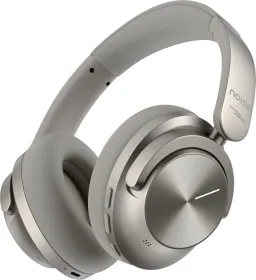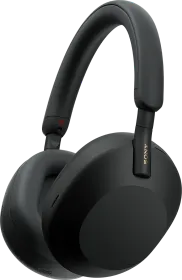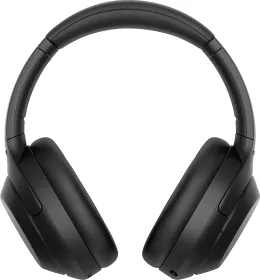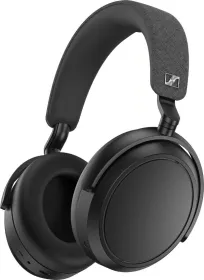In a premium audio space dominated by Sony’s WH-1000XM6 (launched in the US only at the time of writing) and Sennheiser’s Momentum 4, Nothing has entered a new product category with its first-ever over-ear headphones: the Nothing Headphone (1). This is a significant launch, not only because it’s their most expensive audio product yet, but also because it signals the company’s intent to compete in the serious, high-fidelity headphone market.
The design is unmistakably “Nothing.” Transparent elements, intuitive controls, and unique build choices give the Headphone (1) a strong identity. But beyond the aesthetics, the big question is: can it hold its own against two of the most popular headphones in this price segment? I’ve spent some time testing the Nothing Headphone (1) across various use cases. Here’s what I think.
Nothing Headphone (1) Price & Availability
The Nothing Headphone (1) is priced at ₹21,999 in India and $299 in the US. It is available in two colorways: White and Black. You can grab them from Nothing’s official website, Amazon, or select retailers like Croma and Flipkart in India or Best Buy in the US. Nothing is offering ₹2,000 discount on the first sale.
Pros
- Good customizable sound, co-engineered with KEF
- Excellent 8-band parametric EQ
- Intuitive and reliable physical controls (Roller, Paddle, Button)
- Sleek, premium design
- LDAC support
- Great ANC for low-frequency noise
- Good transparency mode
- Clean, well-designed Nothing X app
Cons
- Heavier than average; can feel fatiguing during long sessions
- No LHDC codec support
- Microphone quality is average in noisy or windy environments
Nothing Headphone (1) Review: Sound

Sound quality is the most critical aspect of any headphone, and here, Nothing delivers a fairly refined and versatile audio experience. The Headphone (1) uses 40 mm dynamic drivers co-engineered with KEF, a respected name in the hi-fi world. The result, though, is a sound signature that is quite complex and leans toward the bassy side, to say the least.
Bass performance is energetic but controlled. Sub-bass frequencies are clearly present without bleeding into the mids. That said, the mid-bass is boosted, so those who prefer less bass may want to use the included EQ. Lower mids are rich and clear.
Thankfully, the Headphone (1) supports full 8-band parametric EQ tuning via the Nothing X app. The EQ is responsive and allows for granular adjustments, which is excellent for enthusiasts who like to fine-tune their listening experience. You can even enter the frequencies and the Q factor manually.

Vocals, especially female vocals, do not come through well, and there is some recession too. Upper mids are not the best I’d say. You can EQ it though. Default profile is set to Balanced and AAC codec (I tested with LDAC/Balanced).
As for codec support, you get AAC, SBC, and LDAC, but no LHDC. This may disappoint users who rely on devices that prioritize the LHDC codec, such as some Xiaomi or OPPO phones. LDAC performance over Bluetooth was solid, and I did not encounter any significant stutters or dropouts. That said, for gaming or ultra-low-latency use cases, I would prefer using the included 3.5 mm cable with an external DAC via Type-C.
Spatial audio and dynamic head tracking are also included, and while the implementation works reasonably well, it is not something I personally found useful beyond watching films. When it is enabled for music, the experience tends to feel processed rather than immersive. Still, the option is there, and it may appeal to users who consume a lot of video content.
Nothing Headphone (1) Review: Design and Build

Design has always been one of Nothing’s strong suits, and the Headphone (1) continues that legacy. The transparent outer shell, combined with polished aluminium and matte-finished plastic, gives these headphones a striking appearance. They look unlike anything else in the market, yet still feel mature and purposeful. The transparent section reveals the inner components subtly, which is a signature of Nothing’s design language. It looks good in person.

The build quality is robust. The headphones feel dense but premium, and the moving parts (including the adjustable telescopic headband) offer a smooth, satisfying resistance. You also get a hard-shell case in the box, which has a fiber texture and can store the headphones when the earcups are rotated flat. This rotating hinge mechanism is well-built and offers good portability.

The headphones weigh 329 grams. While this is not unusual in the premium category, I did start to feel some fatigue after wearing them for more than two hours continuously. For short to medium sessions, comfort is excellent, thanks to the soft PU leather and memory foam padding. The fit is snug and does not create uncomfortable pressure points, and the earcups create a solid passive seal as well. There is an IP52 rating for water and dust resistance as well.
Nothing Headphone (1) Review: Fit and Comfort

Comfort is subjective, but for my usage, the Headphone (1) scored well in daily use. The headband distributes weight evenly, and the ear cushions do not trap too much heat even during extended listening. The earcups are large enough to enclose the ears entirely, which helps with both comfort and passive noise isolation.
However, the headphones are not lightweight. As mentioned earlier, at 329 grams, you will begin to feel the weight after longer listening sessions. While this did not result in soreness or pain for me, it might be worth keeping in mind if you plan to wear these for multiple hours without a break. It’s not recommended to do that, by the way. Always allow your ears to breathe after 60 minutes of use.
Nothing Headphone (1) Review: Controls
This is one of the most well-executed aspects of the Nothing Headphone (1). Instead of relying on touch-based gestures (which are often inconsistent) Nothing has implemented physical, tactile controls in the form of a Roller, a Paddle, and a physical Button.

The Roller controls volume and playback. Scrolling up or down adjusts volume, pressing it once plays or pauses music, and a long press switches between ANC and Transparency Mode. The feedback is excellent and I love it. It clicks with precision, and the rolling mechanism is smooth. You also get a sound.

The Paddle is used for track navigation. Push right to skip a track, left to go back, or hold either direction to scrub through audio. It feels intuitive and becomes second nature within a day of use. I love this Paddle thing.

The third control is a physical Button located on the side of one of the earcups. On Nothing phones, this can trigger a feature called “Channel Hop” (available first on Phone (3) only), while on other Android and iOS devices, it acts as a customizable shortcut, like launching your voice assistant or starting Spotify. The level of customization offered via the Nothing X app is excellent.

I like the fact that almost everything can be controlled from the headphones only. There’s no need to reach out for the app all the time.
Nothing Headphone (1) Review: Companion App

The Nothing X app is polished, intuitive, and functional. It displays the battery percentage, gives full access to EQ settings, allows remapping of controls, and provides toggles for ANC, Transparency, and Spatial Audio modes.
I found no crashes or bugs during my time using it. The UI is clean and responsive, and overall, it is among the best companion apps I have used with audio gear.

The app also allows sharing custom EQ profiles via QR codes and supports a few additional smart features if you are using the latest Nothing smartphone, including voice memo capture and AI Assistant integration.
Nothing Headphone (1) Review: Connectivity
The Headphone (1) supports Bluetooth 5.3 and offers dual device pairing. Switching between two connected devices was seamless in my testing; I could move from my phone to my laptop and back again without re-pairing or delays. You also get USB-C wired audio support, a 3.5 mm headphone cable in the box, and support for Google Fast Pair and Microsoft Swift Pair.
Latency in standard Bluetooth mode is minimal for media consumption, and there is a low-latency mode available, although I still found the wired connection preferable for gaming and professional audio use. There’s a pairing button on the earcup cushion side and an On/Off button as well.

Nothing Headphone (1) Review: Noise Cancellation and Transparency Mode
Nothing has implemented hybrid ANC that adapts in real time, using both feed-forward and feedback microphones. It can suppress noise effectively up to 2 kHz and up to 42 dB, which is on par with most ANC implementations in this price category.

In real-world use, the ANC was quite effective at canceling out low-frequency sounds such as fan noise or the rumble of traffic. However, it struggled slightly with irregular, high-pitched noises such as keyboard clicks or nearby conversations, which is common for most ANC headphones, unless you are using something like the Sony XM series.
Transparency Mode is excellent. It sounds natural and does not introduce any tinny or artificial tones. I was comfortable using it during conversations without needing to remove the headphones, which is more than I can say for most TWS earbuds.
Nothing Headphone (1) Review: Microphones and Calling

Nothing has equipped the Headphone (1) with a four-mic array supported by AI-based Clear Voice Technology, which has been trained on over 28 million real-world audio scenarios. In theory, this sounds promising. In reality, it performs well indoors but doesn’t fully match the marketing claims in more demanding environments.
During indoor calls, such as in offices or at home, my voice remained consistently clear to the person on the other end, with minimal background interference. The microphones handle echo well, and I did not receive complaints about muffled speech.
However, step into a noisy street or a moving vehicle, and the performance drops (doesn’t get bad but it does drop). The mics begin to pick up environmental sounds, and the AI struggles to isolate the voice properly, especially in scenarios where sudden, sharp noises occur. Wind noise is another weak spot.
It is good enough for occasional phone calls, voice notes, or virtual meetings in quiet spaces. If your primary use case involves frequent calls in challenging environments, this may not be your ideal choice.
Nothing Headphone (1) Review: Battery and Charging

Nothing advertises up to 80 hours of total playback with ANC turned off, and up to 35 hours with ANC enabled. These numbers are codec-dependent. With LDAC enabled, which is the preferred codec for high-res wireless audio, you can expect around 30 hours with ANC on, or 54 hours with ANC off. With AAC, which consumes less power, the full 80-hour claim is within reach.
In my day-to-day testing (solely on LDAC), the headphones drained fine (not abnormally). This included mixed usage, listening to music, attending calls, and occasionally switching ANC modes. I am yet to test the claims but this is what I have got for now.
Though it is a respectable number, it trails behind the Sennheiser Momentum 4, which stretches comfortably past 50 hours even with ANC. The Sony WH-1000XM6 also lasts around 30 hours under similar usage as per Sony’s claims.
Charging is done via USB-C. A full charge takes approximately 1 hour and 45 minutes, while a quick 5-minute charge gives up to 2.4 hours of playback with ANC on, which is an excellent emergency option. This level of fast charging is appreciated.
Review Verdict: Should You Buy the Nothing Headphone (1)?
Yes, if you are someone who values unique, transparent design, prefers tactile controls over touch gestures, and enjoys tweaking the sound to match your personal taste. The Headphone (1) feels well-executed in most areas (design is subjective). Sound quality is good, especially with the EQ customization in the app, which is one of the most versatile implementations we have seen in this category.
While there are a few shortcomings, such as the slightly heavy build, unpleasing default sound, average microphone quality in noisy environments, and battery life that lags behind the class leaders, the overall experience is still commendable at ₹21,999 in India and $299 in the US.

Smartprix ⭐ Rating: 8.1/10
- Sound: 8/10
- Design and Build: 8.5/10
- Fit and Comfort: 7.5/10
- Controls: 9.5/10
- Companion App: 9/10
- Connectivity: 9/10
- Noise Cancellation: 8.5/10
- Microphones: 8/10
- Battery and Charging: 8/10
First reviewed in July 2025.


































